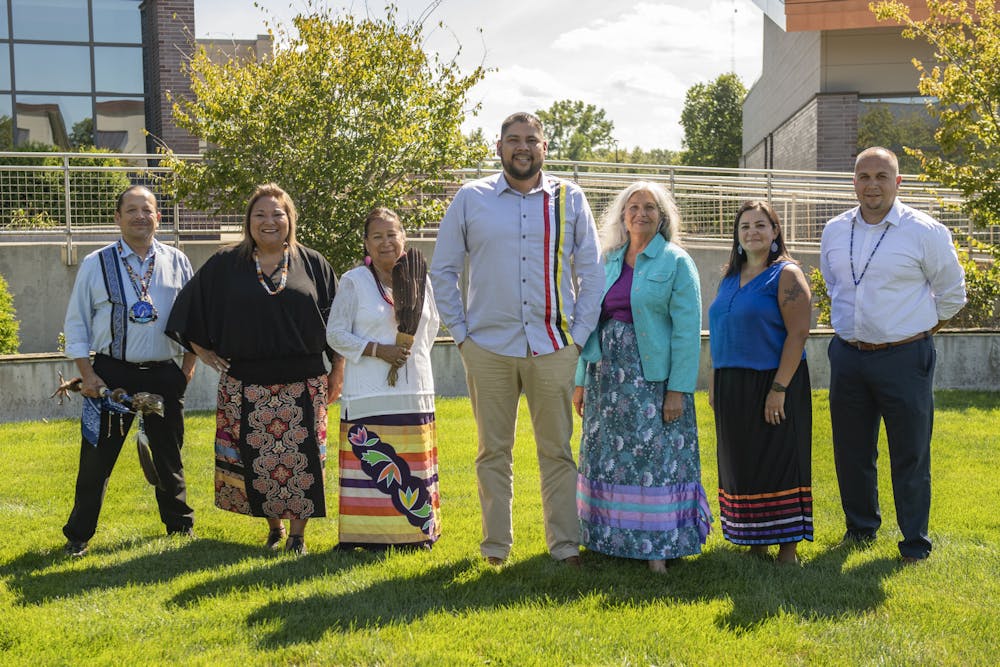From cornmeal to snapping beans
Phyllis Davis talks about her experience with food as an Indigenous person
As a child, flour, corn meal and canned vegetables were staples in the food commodities that Phyllis Davis’ family received.
Davis currently serves as a councilwoman in the Match-E-Be-Nash-She-Wish Band of Pottawatomi Indians, also known as the Gun Lake Tribe, in Shelbyville, Michigan.
Davis grew up in a one-parent household with three siblings, and lived with her grandparents off-and-on.
“I grew up on oatmeal and cornmeal mush,” Davis said. “My grandpa would doctor it up, but if it got cold, he would reset it and fry it up in a little bacon grease.”
In addition to their food commodities twice a month, Davis said her family relied on they canned for the winter and the garden her grandparents maintained. They canned chicken, kept a pantry stocked with vegetables and fished.
But the fish wasn’t just for their family. She said her grandfather shared what he caught in a trap line with other families if he knew they were struggling.
Before she was old enough to learn how to can, Davis said she was old enough to be taught what vegetables to pick.

“Summertime was absolutely beautiful,” she said. “I remember my grandma, aunts, mom and us kids sitting down and snapping beans.”
A few years ago, the Gun Lake Tribe conducted a survey of their members, with one question asking if respondents were experiencing food insecurity. Davis said 30% confirmed that they were.
They identified two sources of the problem:
• Increased cost of living
• Distance from food
Historically, she said the Tribe members lived off of food commodities. And within the Gun Lake Tribe, the cost of living has gone up 20%.
Members of the Tribe either have to buy food in bulk, shop at stores like Dollar General to have something to eat or drive a 40-mile distance to buy nutritional foods that have gone up in price.
“A lot of time, those options aren’t the healthiest choices to make,” Davis said “It’s just the fact that they are there.
“Currently I think the high cost (of) medical inflation, the cost of food for eggs, for bread, for milk (and) for meat have gone up 20% (or) 30% in some places.”
But there are a couple temporary solutions in action.
Many Tribal members had to move to be able to earn money for food. Some would come backon weekends and bring groceries back, and sometimes even share with the local churches.
“Local churches provide food baskets, and I know my family was a recipient of that,” Davis said.
The Produce Prescription Program is another resource she mentioned.
“Produce Prescription Programs support healthy behavior change for individuals and families through partnerships with healthcare and other providers who focus on supporting healthy eating,” according to the Michigan Farmers Market Association.
“Programs are commonly aimed at improving health outcomes for low-income patients with diet-related chronic illnesses.”




